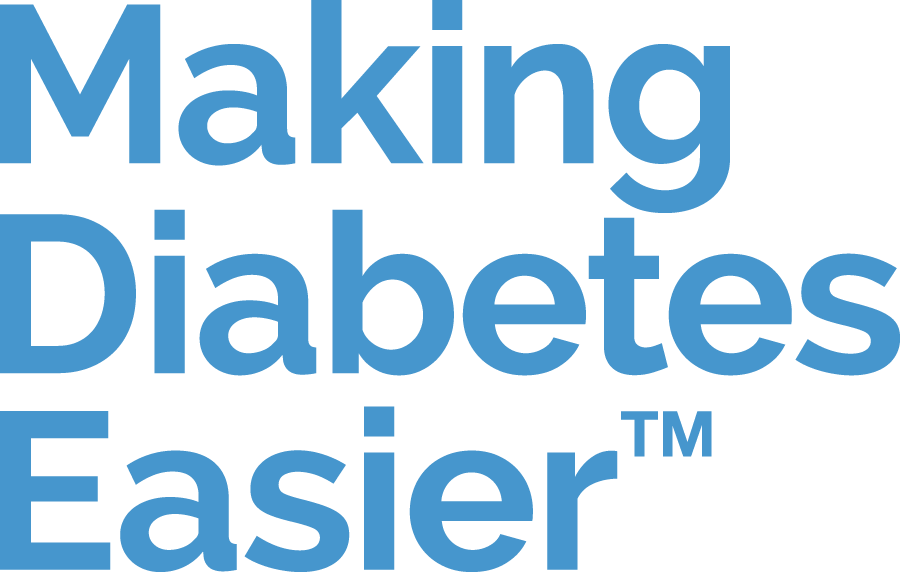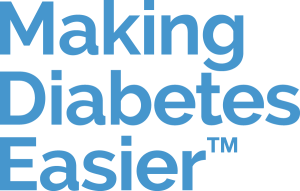What are the treatments for type 1 diabetes?

Type 1 diabetes is an autoimmune condition where the immune system attacks insulin-secreting beta cells.1,2
Because the body doesn’t produce enough insulin in people with type 1 diabetes, daily insulin therapy is needed to regulate blood glucose levels and stave off any complications that may arise if the condition isn’t managed.2
Taking insulin also requires careful monitoring of blood glucose levels and matching the insulin dose with the carbohydrate intake.2,3
Lifestyle habits such as exercising regularly and maintaining a healthy weight are cornerstones of diabetes management too.2
Keep reading to learn about the type 1 diabetes treatments currently available and potentially revolutionary therapies for the future.
Type 1 diabetes treatment
Insulin therapy is the main treatment for type 1 diabetes.2 Below are some of the key insulin delivery options available for treating this condition.
How many people are treated with insulin therapy?
About six million people are currently being treated with insulin therapy, with new types of treatment being researched or in development.
Insulin pump
Insulin pumps are devices that deliver a slow, continuous dose of insulin throughout the day (called basal insulin) as well as additional doses to cover meals or manage hyperglycaemia (called insulin boluses).4
The insulin pump is an electronic device attached to an infusion set that delivers insulin under your skin.4 You can program it to deliver insulin at specific times of day or to match certain activities or situations (like exercising).4
Insulin pumps are considered to be a safe and effective treatment for people with type 1 diabetes of all ages.4 They improve quality of life for people with the condition, increase time in range and help prevent hypoglycaemia.4
When was the first insulin pump invented?
The first attempt to create a portable insulin pump dates back to the early 1960s. Cumbersome and impractical, it was never marketed, it took another 30 years for the first versions of compact, practical, and reliable insulin pumps to be made available.
Learn more about the t:slim X2™ Insulin Pump
The insulin pen

Insulin pens consist of an insulin cartridge and a very fine, single-use needle.4 Insulin pens help you inject insulin by simply pressing a button.4
There are several types of insulin pens:4
- Rechargeable pens with insulin cartridges that can be replaced when empty
- Disposable pens, which are pre-filled with insulin and can be thrown away when empty
- Smart insulin pens that can record the amount and time of each insulin dose and wirelessly transmit the information to a mobile app
Insulin pens are easy to use, convenient and a popular choice among people who use multiple daily injection therapy.4
Artificial pancreas
Despite the name, an artificial pancreas is not an artificial organ but a system that delivers insulin automatically.3 It is also sometimes called an automated insulin delivery system or a closed-loop insulin delivery system.3
These technologies are referred to as artificial pancreas because they mimic the role of a natural pancreas. They consist of:3
- A continuous glucose monitor (CGM) that measures your blood glucose levels
- An insulin pump
- An algorithm (usually in an app on a mobile device) that automatically calculates your insulin dose and delivers it through your insulin pump
Compared with regular insulin pumps, an artificial pancreas can better maintain near-typical blood glucose levels.3
One study has shown that using an artificial pancreas leads to more time spent in range and better blood glucose management, without an increase in the risk of hypoglycaemia.3
How does the “artificial pancreas” work?
The control unit uses mathematical algorithms to automatically adjust the dose of insulin delivered subcutaneously by the pump depending on continuously-monitored blood glucose levels. Most artificial pancreas systems take a hybrid approach in which the patient manually triggers delivery of fast-acting bolus insulin before a meal.
New treatment perspectives: the future of diabetes treatment

Despite the above advancements in diabetes management technologies, a large number of people with type 1 diabetes still struggle to keep their blood glucose in range.1
Type 1 diabetes remains a condition that requires constant care and its proper management is dependent on daily insulin therapy.1 This can be costly and may negatively impact a person’s physical and psychological wellbeing.1
As a result, the quest for innovative therapies and a diabetes cure that would remove the need for daily insulin continues.1,3
Pancreas and pancreatic islet transplants
One of the emerging innovations in type 1 diabetes treatment is beta cell replacement therapy, which involves transplanting either the whole pancreas or just the pancreatic islet.1
Both forms of transplant would do away with insulin therapy, greatly improving quality of life and helping reduce diabetes complications.1
However, both interventions require lifelong immunosuppressant medication to stop your body from rejecting the transplant.1 An additional disadvantage is the limited availability of donors.1
Stem cell therapy
To avoid the need for donor tissue, researchers have turned to stem cells (immature cells have the ability to develop into many different cell types or to renew themselves) to create insulin-producing beta cells.1,3
Scientists have experimented with different types of stem cells and delivery methods that would protect the stem cells from the body’s autoimmune attack.1,3
For example, in a technique called encapsulation, the stem cells are covered in a protective physical capsule.1,3 This technique may remove the need for immunosuppressive drugs; however, the research is still in its early days, and more studies are required.1,3
Insulin pill
The scientific community is also looking to develop an insulin-based pill – a tablet you could take orally, eliminating the need for insulin injections.5
But, the challenge with this therapy so far has been that tablets dissolve when they come into contact with stomach acid.5
Recently, however, international researchers were able to use nanotechnology to deliver insulin pills safely, protecting them from stomach acid by attaching the insulin to tiny nanocarriers.5,6 The scientists obtained promising results in animal models, and human clinical trials are underway.6
Immunotherapy treatment: could there ever be a diabetes vaccine?
As scientists understand more and more about the role of the immune system in type 1 diabetes, they’re also exploring potential diabetes vaccines that would prevent insulin-producing beta cells from being destroyed.1
For example, by using genetic engineering, some experimental vaccines have enlisted the help of a type of immune cell called T cells to help beta cells continue to secrete insulin as expected.2
Another type of immunotherapy has managed to boost the number of regulatory T cells ( a type of white blood cell that regulates your immune system’s response), therefore suppressing the autoimmune attack from happening and preventing beta cells from being destroyed.2
To learn more about immunotherapy for type 1 diabetes and the quest for a diabetes vaccine, read our dedicated article, ‘Is there a cure for type 1 diabetes?’.
Researchers have made significant progress in type 1 diabetes treatments since the discovery of insulin more than a hundred years ago.1
Great technological advancements have been made in blood glucose monitoring, insulin pumps, transplantation and immunotherapy.1 But, the quest for a treatment that delays type 1 diabetes or prevents it altogether is ongoing.1
Sources
- Subramanian S, Khan F, Hirsch IB. New advances in type 1 diabetes [published correction appears in BMJ. 3 June 2024;385:q1224. doi: 10.1136/bmj.q1224]. BMJ. 2024;384:e075681. Published 26 January 2024. https://doi.org/10.1136/bmj-2023-075681
- Singh A, Afshan N, Singh A, et al. Recent trends and advances in type 1 diabetes therapeutics: A comprehensive review. Eur J Cell Biol. 2023;102(2):151329. https://doi.org/10.1016/j.ejcb.2023.151329
- Euroipena Al-Naseem AO, Attia A, Gonnah AR, et al. Pancreas transplantation today: Quo vadis? Eur J Endocrinol. 2023;188(4):R73–R87. https://doi.org/10.1093/ejendo/lvad032
- Dovc K, Battelino T. Evolution of diabetes technology. Endocrinol Metab Clin North Am. 2020;49(1):1–18. https://doi.org/10.1016/j.ecl.2019.10.009
- Hunt NJ, Lockwood GP, Heffernan SJ, et al. Oral nanotherapeutic formulation of insulin with reduced episodes of hypoglycaemia. Nat Nanotechnol. 2024;19:534–544. https://doi.org/10.1038/s41565-023-01565-2
- JDRF. Early research shows glucose-responsive insulin tablets are safe and effective in animals. Accessed 2 September 2024. Available at: https://jdrf.org.uk/news/early-research-shows-glucose-responsive-insulin-tablets-are-safe-and-effective-in-animals/





